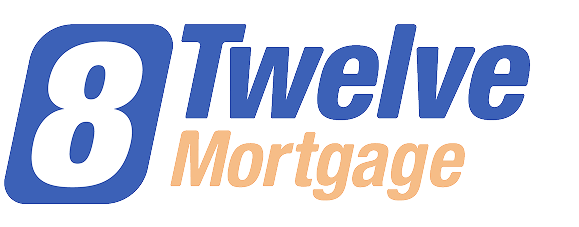
Summary
- One of the toughest parts of investing in real estate is saving up for a down payment, especially in Toronto.
- The BRRRR method helps you use other people’s money (OPM) to secure down payments and build your real estate portfolio.
- BRRRR stands for buy, renovate, rent, refinance, and repeat.
- Successful BRRRR investors buy a less-than-stellar property at a good price, renovate and rent it out, then refinance it to secure enough cash for a second down payment.
What Is the BRRRR Method? A Guide to Smart Real Estate Investing
Ready to invest in a second or third real estate property? Your ambition might say yes, but your bank account says no.
You might have put most of your savings into your first Toronto house or condo. Now that you’re recuperating and adjusting to your mortgage payments, your eyes are set on the next opportunity.
Today’s average Toronto salary is about $62,000. Maybe you make a little more. You know you can handle another mortgage, especially if you rent it out.
The problem? How on earth will you come up with another down payment with today’s real estate prices?
The BRRRR method is a common real estate investing strategy that works well with the Toronto market. We’ll cover what BRRRR stands for, why it works for many investors.
What does BRRRR stand for?
BRRRR stands for:
- Buy
- Renovate
- Rent
- Refinance
- Repeat
It’s a popular real estate investment strategy that uses the power of OPM — other people’s money — to secure your next property. The idea is to buy a property, renovate to increase its value, rent it out to show the bank money coming in, and refinance for a higher-appraised property value. The refinance is the OPM that leaves you with extra cash to put as a down payment for the next property.
But that doesn’t mean you’re off the hook for savings completely. You’ll still need some serious coin to make BRRRR happen smoothly. Let’s break BRRRR down into it’s individual parts:
1. Buy
Ideally, you want to buy low. We know, that’s a tough one in today’s market. But you could look outside Toronto to keep things lower. Or, you could look at properties in serious disarray to catch the right price.
Perhaps you already have a property to work with. In that case, let’s move to step two.
2. Renovate
Or refurbish, rehabilitate — whatever floats your boat. Now, it’s time to revamp your newly purchased property into a rent-worthy, appraisal-impressing home. You might update its electrical wiring, install new kitchen cabinets, add a third bedroom extension, replace the floors, or do anything else to increase your property value.
In some cases, the property is so desperate for TLC that you legally need to renovate to bring it up to code.
3. Rent
Your goal here is to get as much rent as you can for your new unit(s).
Of course, you’ll need to vet your tenants carefully. One risk of the BRRR method is tenants who don’t pay rent, which could lead to mortgage default. These days, Toronto landlords are turning to Airbnb for less-risky income, even if it requires a more upfront investment in furniture and extra home expenses to maintain the property.
Let a little time pass for your new property to appreciate — which it almost always will in Toronto. Your new rental income can help you cover your mortgage and hopefully more to replenish your savings from the renovation.
4. Refinance
Hopefully, your property has jumped up in value from its original price and above what money you’ve put into making it better. Assuming you have enough income to score a new mortgage at a decent rate, it’s time to hit the bank for refinancing. Most lenders will refinance you 80% of the home’s value.
Let’s say you purchased the home for $850,000, and the new value is $1.3 million. The bank will give you $1,040,000 (80%) and a new mortgage. About $850,000, less a few mortgage payments, would go toward your original mortgage. The remaining $190,000? Yours to keep.
You’ll likely spend a solid chunk — let’s say $90,000 — repaying any loans you took out for the renovation. But then you have $100,000 left to play with before taxes if your original property wasn’t your primary residence. You can see your refinance options by booking a free consultation today with Lotly.
5. Repeat
Now, you have a solid chunk of change to put down on that next hot property — maybe it needs some TLC, but you’ll repeat the process and build it up again.
Considerations for the BRRRR method
The BRRR method isn’t for everyone. While it’s helped plenty of investors build their portfolios, most of them had a few things go right for them:
- They had enough capital or access to loans to fund a renovation.
- Their tenants always paid the rent.
- The market was high, and interest rates were low when they refinanced.
But all those things lining up aren’t as certain as you’d think. Sure, the Toronto market is hot — but you might face problems refinancing if you seem overleveraged.
Similarly, a real estate investor with non-payment of rent might get a mortgage rejection for lack of acceptable income.
For example, one 28-year-old investor tells Toronto Life he funded renovations with his successful cryptocurrency investments. He invested $5,000 and made $85,000 within a year — and that’s not common for the average person. Furthermore, he maxed out his lines of credit, a luxury that one investor might not have access to.
Still, real estate is an adaptable game. And it’s not impossible to adapt.
You might not have enough money to pay for a renovation now, but you might sit and wait for the property to appreciate on its own. Then, you could fund a substantial renovation through refinancing or buy a new property and continue the game.





